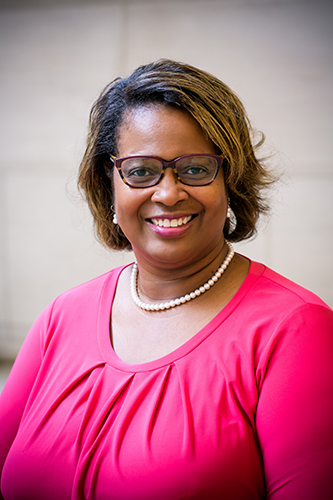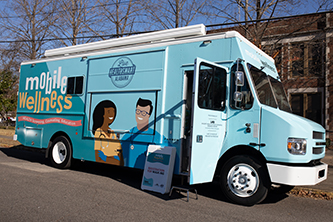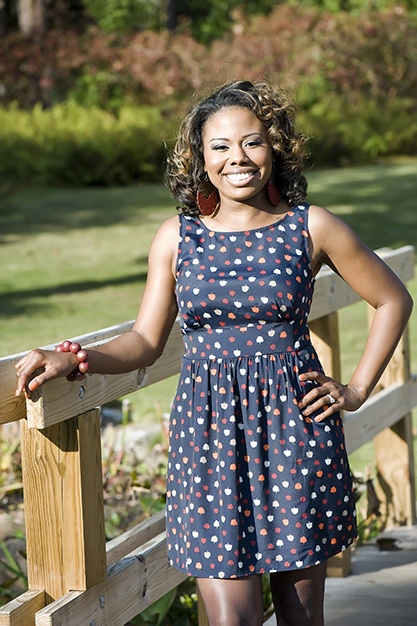Contributing authors: Anne Heaney, Minority Health and Health Disparities, and Julie Cole Miller, O'Neal Comprehensive Cancer Center
A Claudia Hardys the country celebrates Black History Month, the Heersink School of Medicine Office for Diversity & Inclusion wants to focus on members of our faculty and staff that are making a difference. For part two of the Black History Month series, we are talking about community health.
Claudia Hardys the country celebrates Black History Month, the Heersink School of Medicine Office for Diversity & Inclusion wants to focus on members of our faculty and staff that are making a difference. For part two of the Black History Month series, we are talking about community health.
Community health is centered around how environmental and social factors can affect the overall health of a person. In other words, how your zip code can affect your physical and mental health.
Our spotlight this week will focus on improving the physical health of our medically underserved communities. UAB’s Claudia Hardy, MPA, of the O’Neal Comprehensive Cancer Center’s Office for Community Outreach and Engagement, and Lemeshia Chambers, Ph.D., of Live HealthSmart Alabama will share how they are addressing the challenges and seeking equity for the groups they serve.
Q: What is community health and how do you see it in action through your position?
LC: Community health, by definition, focuses on how factors such as socioeconomic hardship and cultural standards affect overall health. Through my position, I largely encounter those individuals who because of lack of access to good nutrition, physical activity, and wellness, have a higher incidence of chronic disease development.
CH: Community health focuses on the overall wellbeing of all individuals who are members of a community. It takes into consideration social determinants of health (the totality of an individual) and their impact on the physical, mental and spiritual life of an individual. Through my work as program director for the Office of Community Outreach and Engagement at the O’Neal Comprehensive Cancer Center, we endeavor to better understand the cancer burden in our catchment area, which is essentially the medically underserved people of Alabama and the Mississippi Delta. In doing this work, it’s important that we take into consideration the overall health of a community as we work to improve individual health status. We focus on seven impact cancers, specifically breast cancer, lung cancer, prostate cancer, colon cancer, cervical cancer, brain tumors, and multiple myeloma.
 Q: What are the top health issues in Black communities that your work seeks to address? How do they impact the current and future health of the communities you work within?
Q: What are the top health issues in Black communities that your work seeks to address? How do they impact the current and future health of the communities you work within?
LC: Obesity, Diabetes, High Blood Pressure, and High Cholesterol. My work seeks to reduce the incidence of these chronic diseases locally and throughout the state. The current health of not only Blacks but Alabamians and Americans alike could benefit from improvements in their overall eating and physical activity habits, which would subsequently improve the incidence of chronic disease development. Specifically, for the communities that I work within, the goal is to educate the community members on the importance of developing healthier eating habits, provide them with access to healthy food options through the Mobile Market, and finally provide them with a real report of their health numbers — specifically cholesterol, glucose, and blood pressure figures — via the Mobile Wellness van.
CH: The top health issues that the OCOE works to address includes increasing knowledge and awareness of our seven impact cancers and their impact on Black communities; increasing cancer screening opportunities, as African Americans have the highest incidence and mortality rates of several types of cancer; increasing access to cancer screenings and—importantly—treatment in local communities; and increasing minority participation in clinical trials. These priorities will ultimately give African Americans greater health outcomes, which ultimately will reduce cancer disparities.
Q: What initially sparked your interest in this specific subject?
LC: The mental and physical health of “people” has been a passion of mine, along with working with those individuals with limited to no access to appropriate medical and mental health services. In all my work-related activities, I have made the most effort to be a continuous advocate for and educator of the underserved.
CH: I’m a native of rural Dallas County (Selma, AL) and have often experienced and witnessed extreme racism, poverty, social injustices, and limited health care resources. Having seen those social and health inequities caused me to want a career in health and human services. I’ve always been interested in opportunities to improve my personal health and that of the medically underserved. I believe “to whom much is given, much is required.”
 Lameshia ChambersQ: What do you hope to accomplish in the future? What goals do you have on the horizon?
Lameshia ChambersQ: What do you hope to accomplish in the future? What goals do you have on the horizon?
LC: Professionally, I look forward to continued growth and expansion with Live HealthSmart Alabama. I am excited to be part of an amazing team of hard-working, community-centered individuals who have the utmost respect for the communities and individuals that we serve. My personal goal for 2022 is continued education within the field of public health. Expanding my health disparity knowledge base to ensure that I can offer both my colleagues and the Live HealthSmart Alabama communities the highest levels of service available.
CH: I hope to transition a lot of my work targeted at individuals through our Community Health Advisors model to work that involves a more systemic approach of targeting clinical organizations. This will definitely make an impact on community health access and treatment. A few of my goals for the future include expanding the reach of the OCOE throughout our catchment area; expanding partnerships to further this work; and, finally — to move from being known colloquially as the “cancer lady” to being known as a community outreach and engagement expert who has the uncanny ability to work in any community to improve community health.